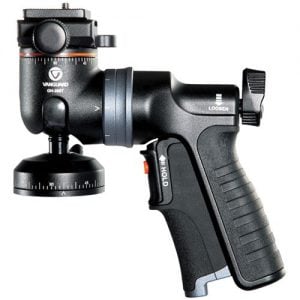Introduction
A tripod is a portable three-legged frame or stand, used as a platform for supporting the weight and maintaining the stability of Camera. A tripod provides stability against downward forces and horizontal forces and movements about horizontal axes.
Understanding Tripod
There are seven characteristics common to all tripods:
- Collapsed size : Collapsed Size is how long the tripod measures with everything folded up. This is important especially if you are travelling and need to pack the ‘pod in a bag.
- Size : Maximum Height Extension is how tall the tripod will stand when every leg is and the center post (a tube that the camera sits on, usually adjustable) is raised as far as it will go.
- Load capacity : The Maximum Load Capacity is the heaviest camera and lens combination the tripod (or tripod head) can handle. If you put a camera that’s heavier than the Maximum Load Capacity on a tripod, you run the risk of a piece breaking or collapsing, causing damage to both the tripod and the camera.
- Head type : The head sits atop the center column, a tube in the center of the tripod’s construction that can be raised and lowered either with a hand crank or via a locking collar.
- Feet : Feet come in rubber non-slip (used for most indoor and some outdoor shooting); spike (best for outdoor shooting, the spikes hold the tripod firmly in the ground); and custom (which could be anything, including ball-bearings).
- Leg locks : Leg locks are available in Twist (twist the leg to pull it out, twist it in reverse to lock it in position), Lever (open a lever to pull a leg out, close it to lock it) and custom options.
- Common material : (Which is what most of the tripod is made of) is either plastic (the least inexpensive, it’s not very durable), aluminum (inexpensive and most commonly used, but in heavy-duty tripods can add a lot of weight), carbon fiber (a relatively new material for tripods, it’s durable, lightweight, and flexible–ideal for most uses–but it’ll cost ya), and wood (typically used by nature photographers who don’t mind toting large-format cameras).
 Tripod Features
Tripod Features
- Quick release plate: Allows you to mount your camera quickly with minimal fuss
- Tripod head: You’ll want to consider the type of head you use carefully and base your decision on the subject you photograph most
- Leg locks: Some photographers like the twist-style of leg lock, while others prefer flip-locks that can be faster to operate if you’re in a hurry
Tripod Types
- Mini/table top-tripod : Small and lightweight, a mini-tripod easily fits into a camera bag or purse. It can be placed on a table top or other level surface when needed. There are also heavy duty mini-tripods that have the features and flexibility of their full-sized counterparts.
Some mini-tripods can be held against your chest to provide camera stability and prevent camera shake when there is no place to set down the tripod.
- Compact tripod : A compact tripod has the height and most of the features of full-sized tripods but is lightweight. A compact tripods folds so it can be placed in a suitcase. Some can not hold a camera more than a few pounds.
- Full-sized tripod : Often the choice of professional and serious photographers where traveling light is not a concern, full-sized tripods can hold heavy cameras with long telephoto lenses. They have heavy duty construction and offer a variety of special features.
- Monopods : Monopods are tripods with a single leg. They support the weight of your camera and virtually eliminate any camera shake; however, you can’t walk away from your camera. They’re much lighter and easier to carry than a tripod, making them ideal for wildlife photographers who tire when holding a large telephoto lens.
Tripod Heads
- Ball head – Ball heads are the fastest to use and adjust. They allow for quick locking and unlocking of the head. Ball heads are smooth and stable and do not “creep” when used with heavy cameras and lenses. However, ball heads can be less precise than other heads. It gives you the most flexibility in how it interacts with the camera, but can be difficult to make minor adjustments in position.

- Pan-tilt head – A pan-tilt head can be moved to pan and tilt to either side. This enables a camera to be held in horizontal and vertical positions. To control movement, pan-tilt heads have a trigger mounted on a handle that are tightened or loosened to alter the camera position. There a two-, three- and four-way heads. They are precise. They take up more space than a ball head, but are easier to make minor adjustments.

- Geared head – Geared heads, often used in studios and for certain types of field work, offer precise control and great stability for heavy photographic equipment. Capable of fine adjusting and control, a geared head allows the photographer to obtain very exact framing.
- Fluid head – Fluid heads contain a lubricating fluid around moving parts that enables very smooth movement of a camera. Fluid heads are particularly useful for panning. A fluid head is essentially a pan & tilt head, but geared for video work.

- Pistol Grip Heads : A pistol grip head is very similar to a ball head. Instead of having to use a knob to loosen the ball, you’ll use a pistol grip. Some photographers like how quick and easy it is to reposition the camera without fumbling with the tripod head.


